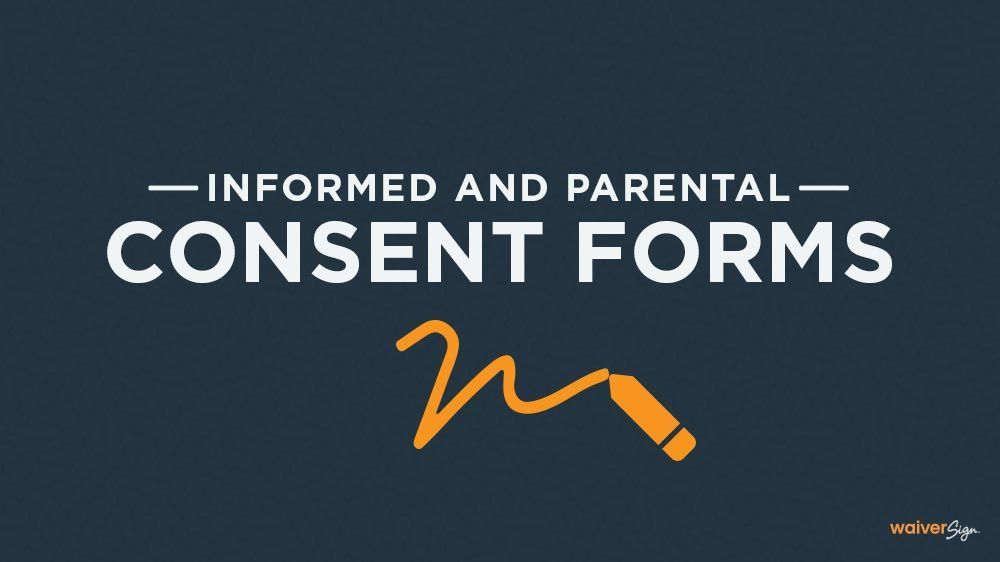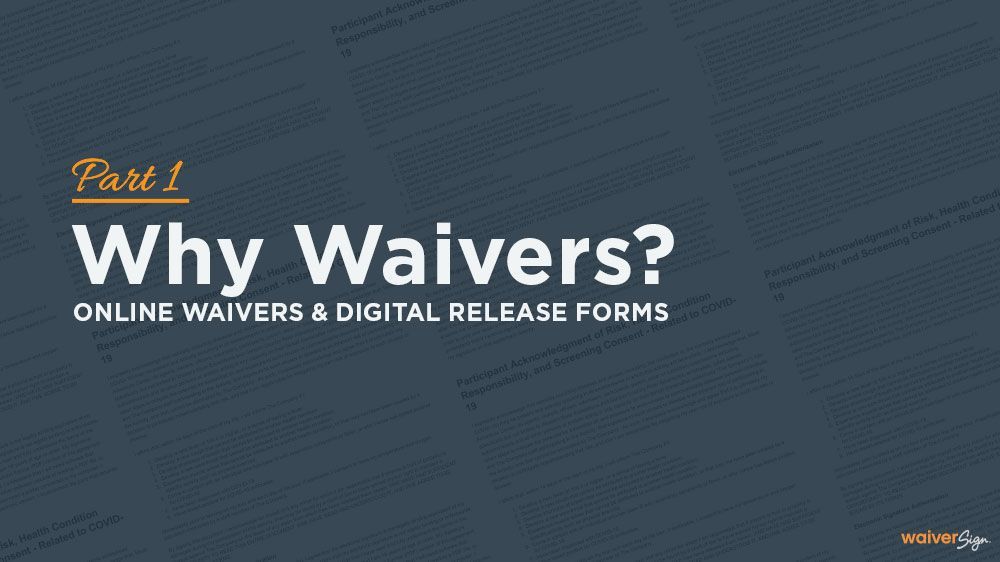Photo Release Forms: What They Are, Which One You Need, and How to Put Them to Use

Stephen Porritt
What Is A Photo Release Form?
At its core, a photo release form lets the person signing the document give another person or company the right to use a given photo (or photos) in some way. In other words, it transfers control of how a photo is used.
Here’s a common example. Say a photographer takes a picture of a model and wants to use the photo in their portfolio to demonstrate their camera skills. That’s a commercial purpose, so the photographer needs permission from the subject of the photo (i.e. the model).
The photographer has the model sign a photo release form, which effectively transfers “ownership” of the photo from the person who’s in the photo to the person who took the photo. From there, as long as the language in the release form says she can, the photographer can use the photo how they like.
Now, depending on the wording in the photo release form, it may transfer all rights regarding the photo, or it may only permit the photo to be used in specific ways. Here are a few of the kinds of rights photo release forms can be used for:
- Using the photo for commercial purposes (like for an advertisement)
- Using it for personal profit (like adding it to a photographer’s portfolio)
- Printing the photo
- Sharing the photo with someone else for them to use
- Displaying the photo publicly, like on a website
There are a lot of rights that can be given via photo release form. The key is creating one with language that accommodates for the parties involved and the circumstances in your given situation.
Who Signs The Photo Release Form?
This depends on who’s transferring rights, but there’s sometimes a series of releases as the photo changes hands. Here’s what we mean.
When a photo is initially taken, a photographer will usually have the model (or models) sign a photo release form so that it can be used for the photographer’s profit. Then, the photographer might sign one when they sells it to a company for use in ads. And if that company is, say, a movie studio, even they may sign one giving rights to movie theaters to print posters and promotional material for the movie.
The important things to remember here are that the photo release form performs due diligence on the part of the parties who had a stake in the photo, and it protects the recipient’s ability to use the photo without legal conflict.
When Do I Need A Photo Release Form?
Ok, so how do you know if you need a release form? Well, the number one reason for photo release forms is when the photo will be used for commercial purposes, and the photo contains the image or likeness of something you don’t own. Let’s break it down further.
Who Has Rights to a Photo?
First and foremost, a photographer has a stake in every photo they take, since they are the artist that created the image. If the photo is of natural scenery, wild animals, or other things that don’t have a traditional “owner,” the photographer is the only one with rights to the image, and they can do what they want with it.
Things get a little messy when something in the photo is clearly recognizable by those who view it. When a person, a pet, a home, a car, a building, or something else is in the photo that can be identified for what or who it is, then they have a right to the photo as well, and a say in how it’s used (more on this below).
What Are “Commercial Purposes?”
The term “commercial purposes” is all about generating revenue. When someone stands to profit in some way by the use of the photo, even indirectly, this is a commercial purpose. So, whether it’s a photographer selling the photo, or a company using the photo in an ad, it counts.
In other words, photos taken for private use are fair game. Once you try to use it to generate some cash, though, you need a photo release form to do so (if you don’t already have sole rights to the photo).
There are a few exceptions to the definition of commercial purposes, though, the most notable being the press.
You can sell a photo to a newspaper or other news outlet, as this falls under freedom of the press, but only as long as you meet the prerequisites of “depicts real events” and “newsworthy.” “Depicts real events” just means that the photo wasn’t staged, and shows what actually happened when it actually happened. “Newsworthy” means it’s some deviation from business as usual. Cars commuting into the city isn’t news, but an accident is.
What About Privacy?
You also need photo release forms for protecting the privacy of models.
See, everyone has a likeness, and they lay sole claim to it. Each person has a right to say whether or not people can profit off of the mug they were born with (or currently have, as the case may be).
The laws that enforce this are designed to protect privacy, and you’ll have to account for them with photo release forms any time you deal with a photo of a person who isn’t you. These laws also protect against defamation of character, so photographers can’t just take your picture and sell it to the press saying you’re a terrible, horrible, no good, very bad person, without your permission.
Now, there are two exceptions to this. The first is when the likeness isn’t recognizable. If the image is out of focus, if it’s poor lighting, or is otherwise difficult to identify the person in the photo, you’re in the clear, because their likeness and their privacy are still protected.
The other exception is when people are photographed in public areas. If you’re snapping photos of people on the street, you can technically sell the photo, but it’s still considerate and ethically sound to ask permission, at least as a courtesy. Also, the photo can only be sold to the press. Other commercial purposes are off-limits.
Finally, photos of minors require parental permission whenever they are displayed publicly (more on this below).
So you need a photo release form. Maybe you’re just starting your photography business, and you need a way to get the rights to use your photos for commercial purposes. Maybe you're a school that needs consent to post the pictures of students online. Maybe you’re a model, and you want to know what your rights are. Perhaps you have talent in photographing families and children and need a photo release form for minors.
Whatever the reason, we can help you understand these very important (and very complicated) legal forms, and help you to find the type that meets your needs.
Please be aware, however, that this article isn’t legal advice. We’re not lawyers (though we are good friends with a few), and you really should consult a professional rather than just snagging a photo release form template from the web. That said, we can still help point you in the right direction.
Let’s start with the basics, shall we?


What Type Of Photo Release Form Do I Need?
If you want your release form to be able to stand up in court in the event of a dispute, it’s critical that you use the right one. These forms vary based on factors such as photo subject and the rights being transferred, so be sure to create a photo release form that matches your situation.
Releasing Different Rights
As we already mentioned, different types of release forms are aimed at giving different kinds of permissions, so you’ll want the one that best fits your circumstances. Here are the three most common types.
PHOTO RELEASE FORM
This is a catch-all term for anything even remotely resembling a contract between someone with rights to a photo, and someone who wants to use said photo, but it also refers to a specific type of release form (specifically, one that doesn’t include certain rights). In other words, if it’s not one of the other two, it’s this one.
PRINT RELEASE FORMS
This is what it’s called if the release includes the right to print the photo. Normally, if someone wants another copy of a photo, they have to go back to the photographer and buy a print. With a print release form, though, the photographer gives them the right to print their own copies, effectively cutting out the middleman (and thus, cutting their profits).
COPYRIGHT RELEASE FORM
This is the most comprehensive form of release. It passes all rights and ownership to someone else.
Most photographers, as you might expect, like to retain creative control over their artwork, so copyright release forms are not very well-liked by the people who actually take the pictures. That said, they’re usually used by major corporations in big photoshoots, so they’re usually willing to pay photographers through the nose for quality pictures that they own outright.
Different Forms for Different Subjects
Release forms also vary based on what’s in the photo. Here are the most common types.
MODEL RELEASE FORMS
This one we’ve kind of talked about already. Any time you're photographing a person, it’s a model release form. It doesn’t matter if they’re not a model professionally, regularly posing for photos wearing hopelessly expensive clothing. No, even a bystander off the street counts as a model when you’re taking a picture, and if you intend to sell the photo, you’ll probably need this release form.
MINOR RELEASE FORMS
Technically a specific type of model release form, minor release forms are used whenever the model is a minor (obviously). What makes this form different, though, is that it’s used even if the photo won’t be used for commercial purposes.
Minors are under stricter privacy protections than adults (since they don’t have the autonomy to consent personally), so these forms are used even in situations like a school posting pictures of students on their website. In other words, whenever a photo of a minor will be used for anything that’s not private family use, you need a minor release form.
PROPERTY RELEASE FORMS
Ok, so maybe you’re not taking pictures of people. Maybe you're taking pictures of things. Well, that still presents a problem, because most things belong to someone. That makes them property, and that means you need permission to use the photo.
What counts as property? Pretty much anything: real property (i.e. houses and homes), automobiles (especially easily recognized specimens, like customized ones), gardens and lawns, artwork, tools, toys, and even pets. Well, as long as those pets aren’t celebrities. Once they’re easily identifiable from others of their kind, they count as “models.”
The key here, like everything else, is whether or not the subject is recognizable beyond a reasonable doubt. You can take a picture of someone’s white picket fence, and as long as it looks like every other white picket fence, you’re in the clear—no release needed.
BUILDING RELEASE FORMS
Buildings have owners too, right? Yes, yes they do, which means they need releases if you’re taking photos of them.
Building release forms don’t apply solely to manmade structures, though. Landmarks and other easily recognized places typically have someone with the rights to photos of them (even if that’s a government entity), and you need their permission if you want to use the photos.
There are even some places that flat out don’t give permission for commercial use of photos, like the Sydney Opera House and the Louvre, so be aware that photos aren’t always fair game.
The Downsides To Paper Release Forms
Alright, we’ve talked enough about the definitions, reasons, and types of photo release forms. Now it’s time to talk about why they can be a hassle, especially if you use them regularly.
First and foremost, there’s the printing. You always need copies on hand, and if you run out, it’s back to the printer with you. That’s fine if you’re only printing, say, a single page a month. But photo release forms, like many legal documents, can sometimes stretch on to multiple pages, and if you’re printing dozens of copies a week, that can really add up.
The paper, the ink, and the printer all cost money. Now, you can either print it yourself, which means you’re paying for the ink, the paper, and replacing the printer when the darn thing won’t connect to your computer anymore, or you can go to a print shop and have them do it. That makes things easier, and if you’re printing in large quantities it can make it cheaper, but it does make it less accessible. You’ll have a hard time finding a print shop available at 9 pm on a Sunday.
Additionally, paper, if you didn’t know, is made from wood which, if you haven’t tried to lift a tree in a while, gets pretty heavy in large quantities. You won’t notice it with only a few pages, but once you’re carrying box after box of copies, you start to notice the load.
Now imagine a storage room full of all those. Either you’re filling your garage with them (and thus can’t park in there), or you’re paying for the space to keep all those boxes. Plus, there’s the thrill of having to shuffle them all around to reach a specific form in the stack. It’s the stuff of back-breaking nightmares.
It’s even worse if you haven’t kept up on your filing organization. We shudder to think of sifting through thousands of forms to find one that was misfiled.
Paper waivers also have to be signed by hand, which comes with several issues. First, not everyone has legible handwriting. Give your photo release form to the wrong individual, and you could find yourself trying to decipher hieroglyphics.
Second, manual signing leaves the integrity of the document vulnerable. That means that the signer might cross out words, write words in, or otherwise modify the document before signing, thereby undermining the document’s credibility in court.
Then there’s the issue of information. Sure, you have stuff recorded, but it’s not easily accessible. And unless you’re plugging everything into a spreadsheet each time you have a form signed, you don’t have a way to take all of your demographic data and compare customer trends. In essence, you have all the information, but really you don’t.
Oh, and about those physical copies: it’s a lot harder to make sure all affected parties have a copy after it’s signed. Of course, you could stay in close proximity to your beloved printer (which most likely copies as well), but heaven help you if you’re out on location when people are signing on that dotted line.
The Solution
All of those problems can be avoided, though. Really easily, in fact. It just takes a digital document solution, like WaiverSign.
Now, we know it’s got “waiver” in the name, and that’s not what a photo release form is. But the technology works just as well for photo releases and dozens of other types of documents as it does for waivers. With our document customization tools, you can build exactly the document you want, collect exactly the data you want, and then do it again (or do it differently) with a new type of document as many times as you want.
WaiverSign is paperless, contactless, and hassle-less. It enables you to allow your clientele to sign wherever they please, so long as they have an internet connection. It gives you unlimited, problem-free storage for all your signed documents. It puts all of your documents (and more importantly, the information in them) within immediate reach. And it provides insights into customer trends and demographics.
WaiverSign is packed with a bunch of other cool benefits and features, all designed to make work easier for you, and the customer experience smoother for those who sign your documents (all for cheaper than your print shop copies). So if you’re done dealing with the problems of paper, then let’s talk.
We’d love to have a pressure-free conversation with you and let you try the system for free. Hit us up, and together, we’ll release your forms from their paper prisons.

See If WaiverSign Works For You
Don't wait to make the next step in streamlining your business.
SHARE THIS BLOG POST











